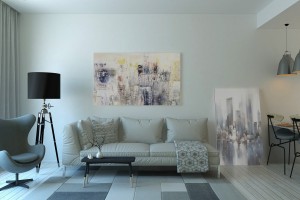El Seed Calligraphy and Arabic Calligraphy in Arabic
Discover the mesmerizing world of El Seed calligraphy and the artistic depth of Arabic calligraphy in Arabic, blending tradition with modern expression.

Calligraphy is one of the most revered forms of artistic expression in the Arabic world. Arabic calligraphy in Arabic carries deep cultural, historical, and spiritual significance. Over centuries, it has evolved from simple scripts to intricate artistic masterpieces.
Among modern calligraphers, El Seed calligraphy stands out for its fusion of traditional Arabic script with contemporary street art. His unique style, known as "calligraffiti," transforms Arabic letters into mesmerizing murals across the world.
This article explores the evolution of Arabic calligraphy in Arabic, its styles, and how El Seed calligraphy has revolutionized the art form.
The Rich History of Arabic Calligraphy
1. Origins of Arabic Calligraphy
Arabic script dates back to the 4th century and gained prominence with the spread of Islam. Calligraphy became the primary medium for transcribing the Quran, leading to its refinement and beautification.
2. Development Over Centuries
Arabic calligraphy evolved into various styles, including Kufic, Naskh, Thuluth, and Diwani. Each script had distinct characteristics, used in architecture, manuscripts, and decorative arts.
3. Arabic Calligraphy in Religious and Cultural Contexts
Islamic culture emphasizes the beauty of the written word, making Arabic calligraphy in Arabic a vital element in mosques, books, and historical monuments.
Styles of Arabic Calligraphy in Arabic
1. Kufic Calligraphy
One of the oldest scripts, Kufic, is characterized by bold, angular letters. It is commonly seen in early Quran manuscripts and architectural inscriptions.
2. Naskh Script
A more cursive and legible form, Naskh became the standard script for copying the Quran due to its readability.
3. Thuluth Calligraphy
Recognized for its elegant curves and elongated strokes, Thuluth is often used in mosque decorations and official inscriptions.
4. Diwani Script
Developed during the Ottoman era, Diwani is highly ornamental and complex, making it popular in official decrees and artistic works.
5. Modern Arabic Calligraphy
Contemporary artists have experimented with Arabic script, merging it with digital art, graffiti, and modern design concepts.
Who is El Seed? The Master of Arabic Calligraffiti
1. Early Life and Background
El Seed calligraphy emerged from the vision of a Tunisian-French artist who blends Arabic script with street art. His works challenge perceptions and create dialogues across cultures.
2. Artistic Philosophy
His style, known as "calligraffiti," combines the fluidity of Arabic calligraphy in Arabic with the vibrancy of graffiti, making his work both visually captivating and socially impactful.
3. Famous Works of El Seed
- The Perception Project (Cairo, Egypt): A large-scale mural that unites fragmented pieces into a meaningful message.
- Dubai Opera House: A blend of Arabic calligraphy and modern architecture.
- International Murals: From Paris to New York, his art bridges cultural and linguistic gaps.
El Seed Calligraphy: Merging Tradition with Modern Art
1. The Calligraffiti Movement
El Seed calligraphy is a fusion of classical Arabic script with contemporary street art, making traditional calligraphy accessible to modern audiences.
2. Social and Political Messages in His Art
His murals often carry themes of unity, identity, and cultural pride, reflecting the richness of Arabic calligraphy in Arabic.
3. How His Work is Influencing the Next Generation
El Seed's approach is inspiring young artists to explore Arabic script in innovative ways, blending it with digital and visual arts.
The Future of Arabic Calligraphy in Arabic
1. Digitalization of Arabic Calligraphy
Advancements in technology have led to digital fonts and AI-generated calligraphy, preserving and expanding the reach of Arabic calligraphy in Arabic.
2. Contemporary Artists Inspired by El Seed
El Seed has paved the way for modern artists to experiment with Arabic calligraphy in Arabic, blending it with fashion, product design, and digital media.
3. Arabic Calligraphy in Global Art Movements
With international recognition, Arabic calligraphy is now being exhibited in major art galleries and incorporated into global design trends.
FAQs on El Seed Calligraphy and Arabic Calligraphy in Arabic
1. What makes El Seed calligraphy unique?
El Seed blends classical Arabic calligraphy in Arabic with modern street art, creating large-scale, meaningful murals.
2. What is Arabic calligraphy used for today?
Arabic calligraphy is used in art, fashion, digital design, and branding, alongside traditional religious and architectural applications.
3. Can anyone learn Arabic calligraphy?
Yes, with practice and guidance, anyone can master the different styles of Arabic calligraphy in Arabic.
4. Where can I see El Seed calligraphy in person?
His murals are found worldwide, including in Egypt, Dubai, France, and the USA.
5. How is Arabic calligraphy evolving in the modern world?
With digital tools and AI, Arabic calligraphy in Arabic is reaching new creative frontiers, integrating with contemporary art forms.
Conclusion
The art of Arabic calligraphy in Arabic has a timeless appeal, preserving linguistic beauty and cultural heritage. El Seed calligraphy brings a fresh perspective to this tradition, making Arabic script relevant in today’s globalized world. Through his work, El Seed continues to inspire a new generation of artists to explore, innovate, and celebrate Arabic calligraphy.
What's Your Reaction?



















